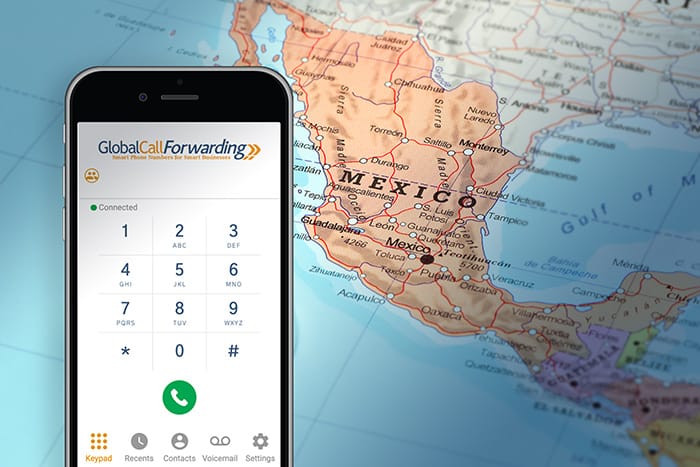As businesses grow across borders, so does the volume and complexity of customer interactions. Whether you’re serving local customers or international clients, handling inbound calls efficiently is critical to delivering high-quality support. That’s where an Interactive Voice Response (IVR) system becomes essential—not just as an automation tool but as a strategic asset for global communication.
An IVR system acts as the first point of contact, guiding callers through menus, routing them to the right department, or enabling self-service—all without the need for a live agent. Below, we explore the key benefits of using IVR to support local and global business operations.
IVR System: Top 11 Benefits
An interactive voice response, or IVR system, is an automated voice response system that answers incoming calls, identifies the purpose of the calls, and assists the caller. It transfers calls to the appropriate department or provides self-serving options that customers can complete themselves. IVR phone systems cut down on time and money while improving the way a caller interacts with a company. Here are 11 ways a business can benefit from IVR service.
1. Prioritizes Calls Based on Value
IVR systems can be predetermined with rules to prioritize and route calls based on the caller and their needs. This way, you can route high-value customer calls to the most appropriate or qualified agent. If agents are unavailable, the caller will be first in the queue. Doing so ensures that your team does not lose an important caller’s business due to long wait times.
With IVR call flow builders, businesses can design tailored IVR routing strategies that reduce wait times, avoid misdirected calls, and ensure each caller reaches the best resource quickly.
2. Reduces Operational Costs
By automating routine inquiries and directing calls efficiently, IVR systems reduce the workload on your support teams. This minimizes the need for large customer service departments and allows agents to focus on high-value or complex interactions. The result is improved cost-efficiency without compromising service quality. Your team can then focus on more important issues and interacting with high-profile clients.
3. Enables 24/7 Customer Support
With an IVR system, your business can remain available outside regular business hours, on weekends, or across different time zones. You can route calls to agents in other regions, direct callers to voicemail, or provide pre-recorded information and self-service options. This ensures no inquiry is left unanswered, even when agents are offline.
4. Improves Efficiency and Increases First-Call Resolution Rates
Customers calling a business need answers fast. Customer service teams are constantly on the phone resolving issues. An interactive voice response system saves time for everyone by interacting with the customer, identifying their needs, and offering support either through pre-recorded messages or by transferring them to the right department. They can expedite calls, accurately transfer callers, help them complete certain actions, and schedule callbacks. These calls never go unanswered. Callers receive support in some form or the other, without time wasted.
Additionally, with well-designed call flows, IVRs can route callers to agents with the right skill set or department, improving the likelihood of resolving issues on the first call. This reduces the need for transfers or follow-ups—saving time for both agents and customers.
5. Supports and Improves Lead Conversion
Recent advancements in IVR technology have made it possible to use this tool for sales and lead generation. You can use IVR to survey or qualify leads, route high-value prospects to live sales reps, or collect information before a call is transferred. This approach saves time and focuses your team’s attention on higher-conversion opportunities.
6. Enables Global Call Routing Strategies
For international businesses, IVR plays a vital role in managing global calls effectively. You can route calls based on geography, language, business hours, or caller type. Paired with international phone numbers and advanced call routing rules, IVR helps deliver localized support and a consistent experience across markets.
7. Enhances Customer Experience with Personalization
Automation is the future of customer service. Modern IVRs go beyond menu prompts. They can use caller data—such as location, language preference, or account type—to personalize interactions and streamline support. This not only makes navigation easier for the caller but also leaves a stronger impression of your brand’s attentiveness.
Most providers offer IVR phone systems that can be customized on your end. Customize to improve caller experience through custom greetings, easy-to-understand prompts, and so on. This interaction should reflect an ideal interaction with your company. Callers who can easily navigate the system and get their concerns resolved quickly will only appreciate your brand even more.
8. Offers Scalable Self-Service Options
IVR systems can adapt to an organization and its customers’ changing needs and expectations. Cloud-based systems are highly customizable and have virtual communication features such as intelligent routing, multilingual capabilities, and more. As your business grows, you can add more to your IVR phone system to support your needs.
9. Delivers Actionable Insights with Analytics
Pairing your IVR system with AI-powered Call Insights provides visibility into call volume trends, call completion rates, and caller behavior. Features like call transcription and sentiment analysis help you evaluate agent performance and caller satisfaction, allowing you to continuously refine your support strategies.
10. Helps Gather Marketing and Feedback Insights
Marketing teams have used IVR to study customer behavior and preferences using phone surveys and conducting marketing research. You can gain insights into your audience’s likes and dislikes, their demographics, communication preferences, and more. This information can be used to serve them better.
11. Strengthens Your Brand’s Credibility
A professional IVR system gives the impression of an organized, responsive, and well-established business. It reinforces trust by ensuring that customers always reach the right place, no matter when or where they call. For companies serving international markets, this reliability is crucial to brand perception.
How United World Telecom Supports Global IVR Strategies
United World Telecom offers a flexible IVR system designed for international use. With our no-code IVR editor, you can build advanced call flows, support multilingual prompts, and route calls across teams or regions—all from a single platform. Whether you’re using international phone numbers, local 2-way voice, or integrating with advanced analytics tools, our IVR solution helps you deliver efficient, scalable customer support worldwide.
If you’re ready to upgrade how your business handles incoming calls, explore our solutions or connect with a telephony expert to get started.
 Network & Reliablity
Network & Reliablity Country Coverage
Country Coverage Testimonials
Testimonials Customer Stories
Customer Stories Local 2-Way Calling
Local 2-Way Calling Toll Free Numbers
Toll Free Numbers Local Phone Numbers
Local Phone Numbers Toll Free FlexDial
Toll Free FlexDial BYOC
BYOC Outbound Calling
Outbound Calling SIP Trunking
SIP Trunking Call Forwarding
Call Forwarding AI Call Insights
AI Call Insights Call Transcription
Call Transcription IVR Auto-Attendant
IVR Auto-Attendant Analytics & Reporting
Analytics & Reporting Call Recording
Call Recording Time-of-Day Routing
Time-of-Day Routing Voicemail
Voicemail Salesforce
Salesforce HubSpot
HubSpot Zoho
Zoho  MS Teams
MS Teams  Genesys PureCloud
Genesys PureCloud 3CX
3CX ZenDesk
ZenDesk  Intercom
Intercom Gorgias
Gorgias Onboarding
Onboarding Knowledge Base
Knowledge Base Blog
Blog







![Best Hong Kong Virtual Number Providers [2025]](https://www.unitedworldtelecom.com/wp-content/uploads/2020/08/Hong-kong-virtual-number-providers.jpg)
